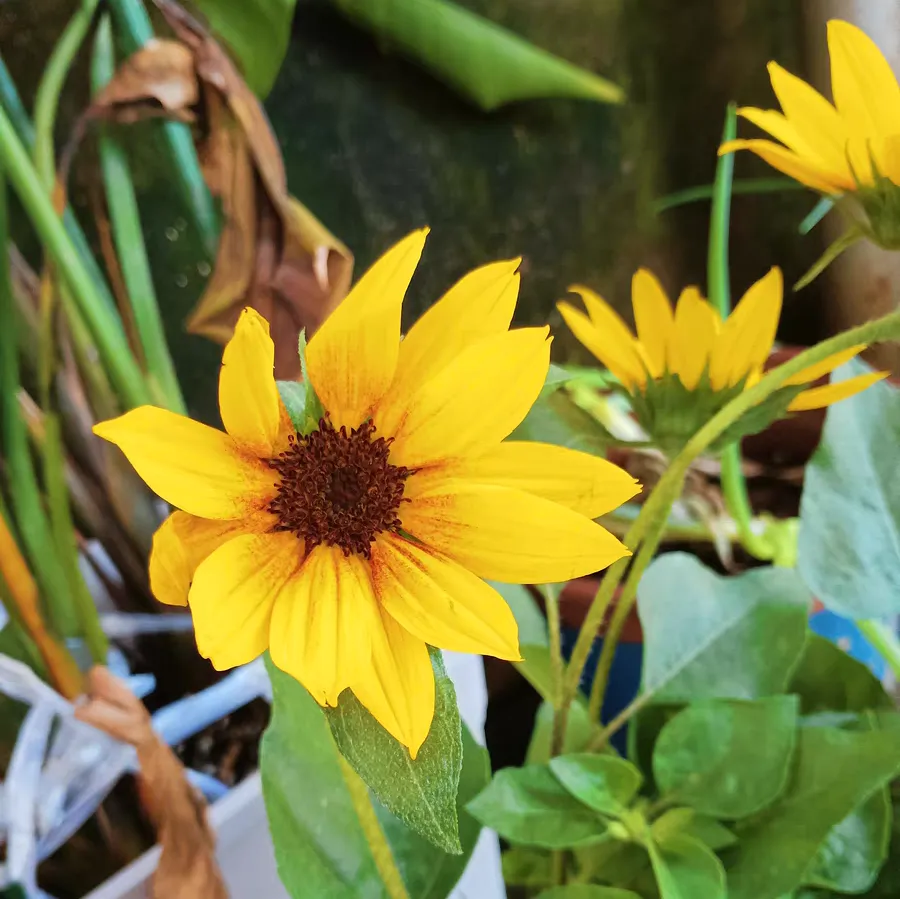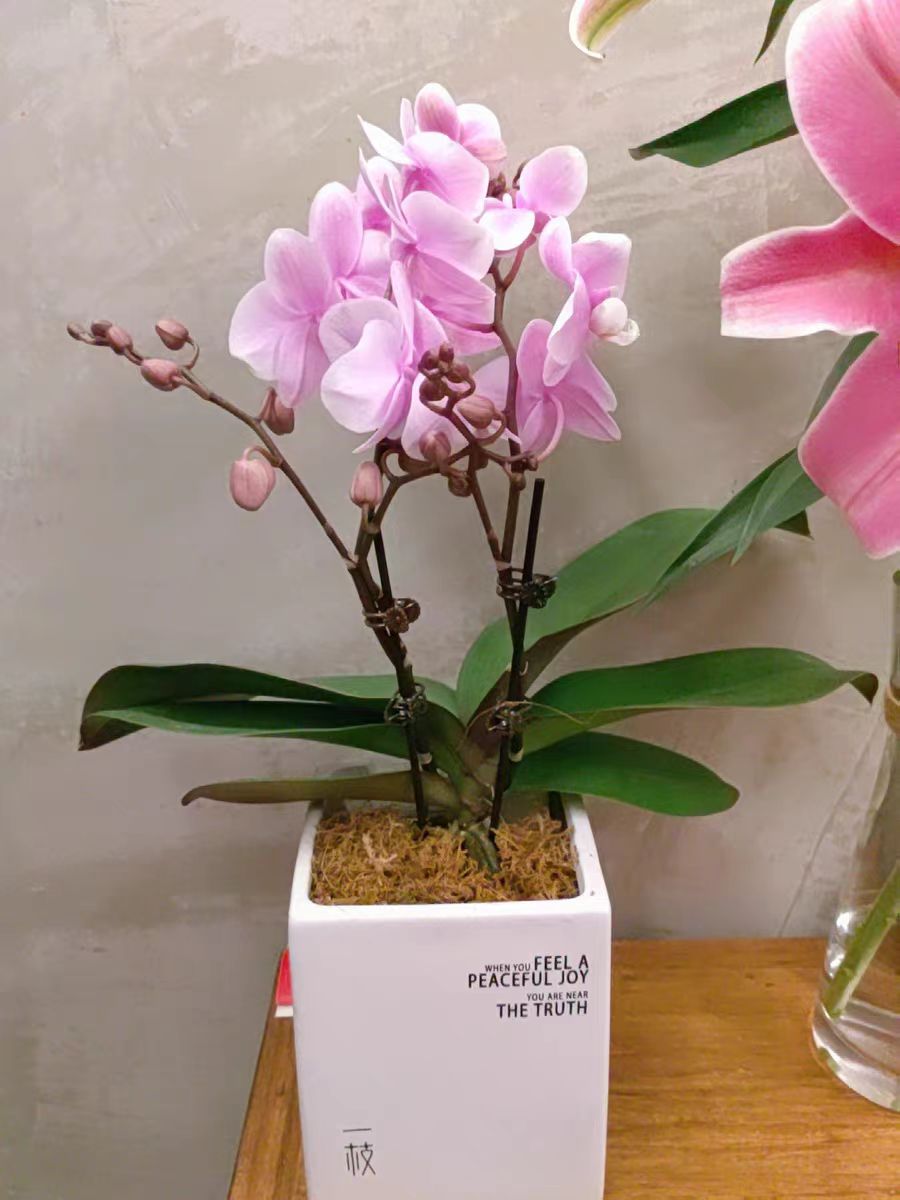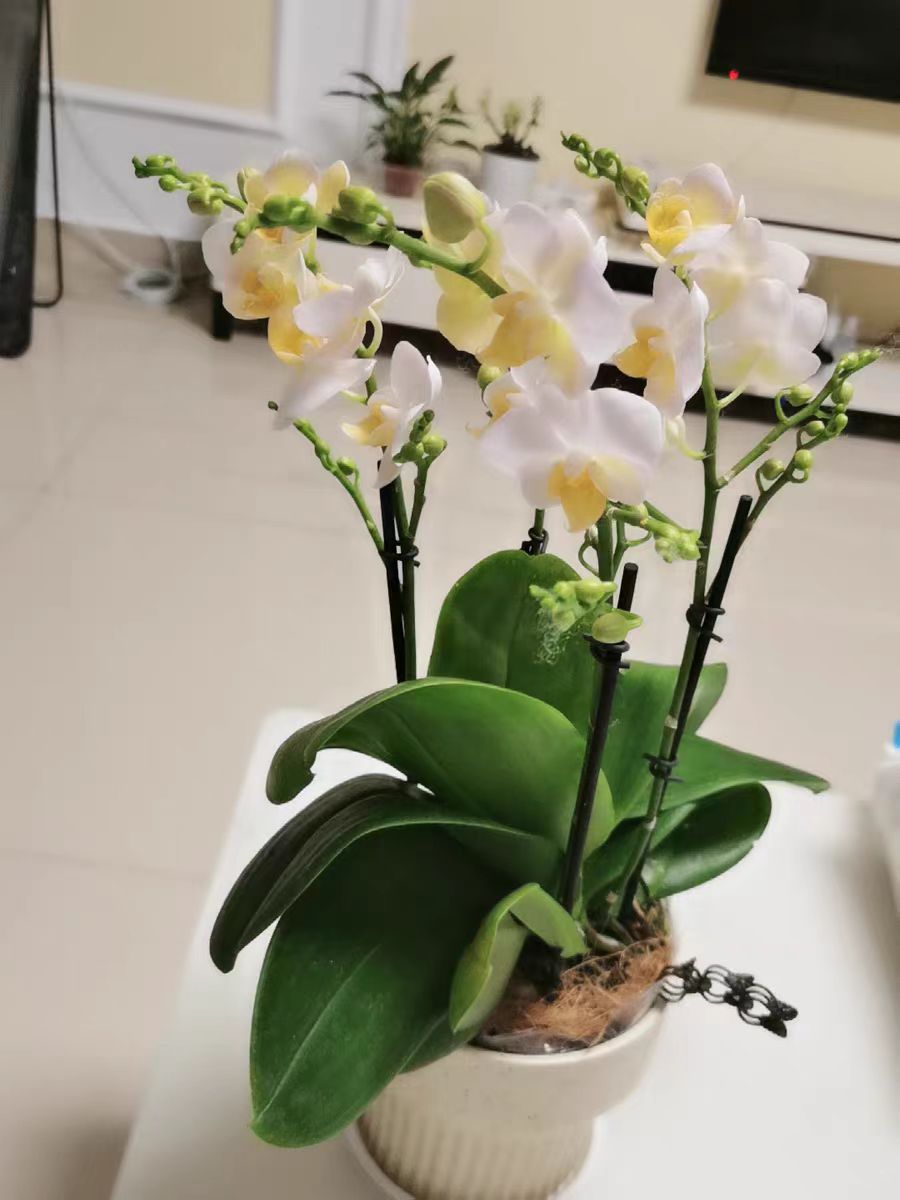Once spring arrives, creating a small spring garden requires key skills in flower combination and matching. Today, I'd like to share several combinations with you.
Sunflower + Morning Glory:
The sunflower is an annual herb of the genus Helianthus in the Asteraceae family. Its large flower head always faces the sun, exuding vitality and energy. The morning glory is an annual twining herb of the genus Ipomoea in the Convolvulaceae family. Its flowers are in the shape of a trumpet, looking playful and cute. Its flowering period is extremely long. Even when the sunflower briefly fades from the stage, the morning glory can take over and bloom, allowing this brightness to continue.
Maintenance: Sunflowers love light and require sufficient sunlight. Keep the soil moist, watering when it feels dry and then waiting until it dries out a bit before watering again. Morning glories are highly adaptable and drought-tolerant. Don't water them too much, and more sunlight will make the flowers even more vibrant.
Geranium + Lobelia erinus: The geranium is a perennial herb of the genus Pelargonium, with a rich variety of flower colors, and the flowers are closely clustered in a spherical shape. Lobelia erinus is a herbaceous plant of the genus Lobelia in the Campanulaceae family. Its flowers are small and delicate, in the shape of a five-pointed star. When these two are paired together, they are incredibly beautiful. Moreover, both of their flowering periods are very long, allowing you to enjoy their beauty throughout the spring.
Maintenance: Geraniums prefer a warm and sunny environment. Water them moderately and avoid waterlogging. Lobelia erinus likes a cool environment, requires sufficient sunlight, and keep the soil slightly moist.
Tagetes patula + Tropaeolum majus:
Tagetes patula is an annual herb of the genus Tagetes in the Asteraceae family. Its orange petals with red spots are bright and eye-catching. Tropaeolum majus is an annual succulent herb of the genus Tropaeolum in the Tropaeolaceae family. Its flower shape is unique, resembling a lotus. The maintenance difficulty of these two plants is extremely low, their flowering period is long, and their colors are bright. Placing them on the balcony will instantly make them the visual focus.
Maintenance: Both Tagetes patula and Tropaeolum majus are very drought-tolerant and love sunlight. Don't water them too frequently. Water them only when the soil is completely dry.
Tulip + Hyacinth:
The tulip is a perennial herb of the genus Tulipa in the Liliaceae family, with an elegant flower shape and a wide variety of colors. The hyacinth is a perennial herbaceous bulbous plant of the genus Hyacinthus in the Hyacinthaceae family. Its inflorescence is compact, and the flower fragrance is strong. Plant them at the same time, and different colors will interweave, filling the room with fragrance.
Maintenance: Both tulips and hyacinths can be planted with bulbs. They like loose and breathable soil. After planting, place them in a cool place first, and move them to a place with sufficient light after the roots have grown. Water them moderately to prevent root rot.
Petunia × hybrida + Calibrachoa:
Petunia × hybrida is a perennial herb of the genus Petunia in the Solanaceae family, with large and numerous flowers and a rich variety of colors. Calibrachoa is a perennial herb of the genus Petunia in the Solanaceae family, with a huge number of flowers, and the flowers are small and delicate like bells. They are highly adaptable, heat-resistant, and sun-tolerant. When mixed and planted in flower beds or hanging baskets, the sight of them in full bloom is extremely stunning.
Maintenance: Both of them prefer a sunny and warm environment. During the growth period, ensure sufficient water and nutrients, and promptly prune off the withered flowers.
Paeonia suffruticosa + Paeonia lactiflora:
Paeonia suffruticosa is a perennial deciduous shrub of the genus Paeonia in the Paeoniaceae family, with large and gorgeous flowers. Paeonia lactiflora is a perennial herb of the genus Paeonia in the Paeoniaceae family, with a soft and beautiful flower shape, similar to that of Paeonia suffruticosa. Their flowering periods are close. When planted together, from late spring to early summer, they will bloom one after another, showing a noble and magnificent atmosphere.
Maintenance: Both love light and are highly cold-resistant. The soil needs to be loose, fertile, and well-drained. Don't water them too much, and promptly apply additional fertilizer after they sprout in spring and after the flowers fade.
Recommendations for the Combination of Potted Plants

Share with
Tagged in :




Leave a Reply